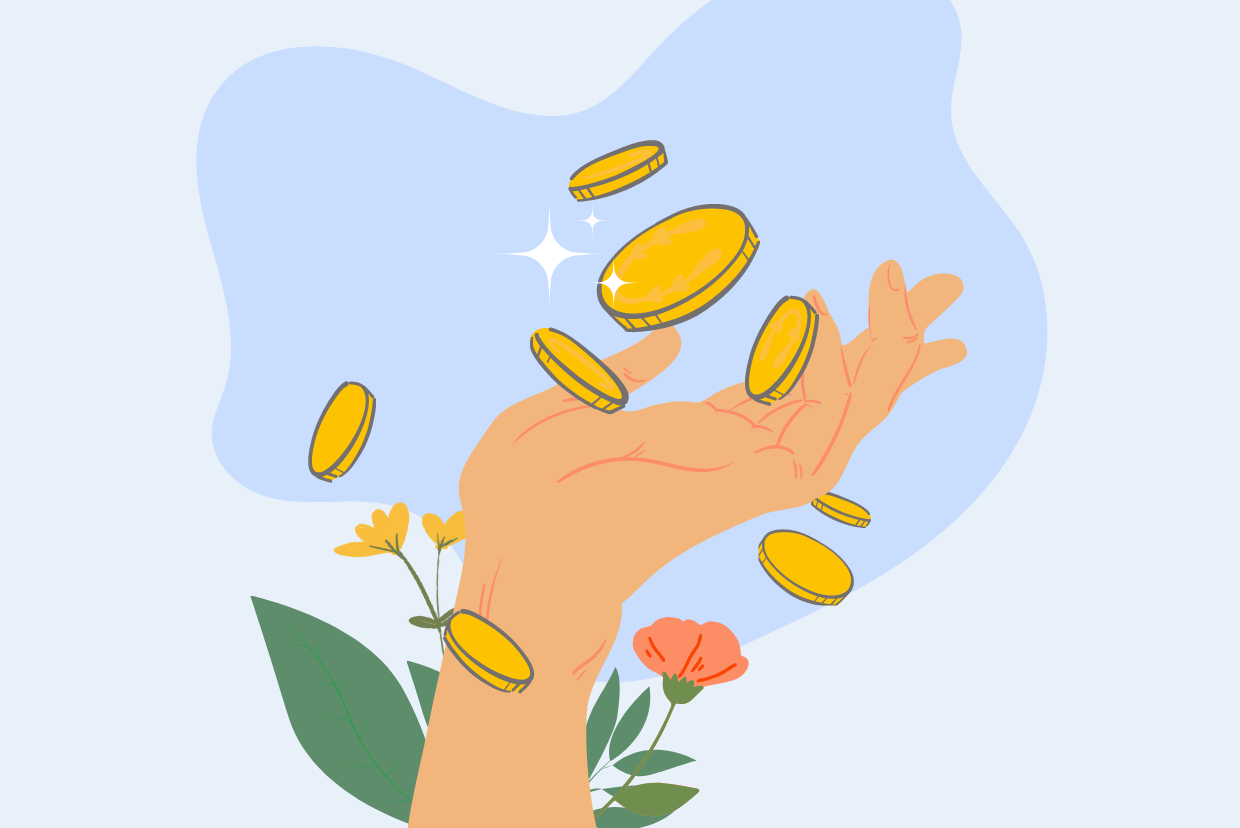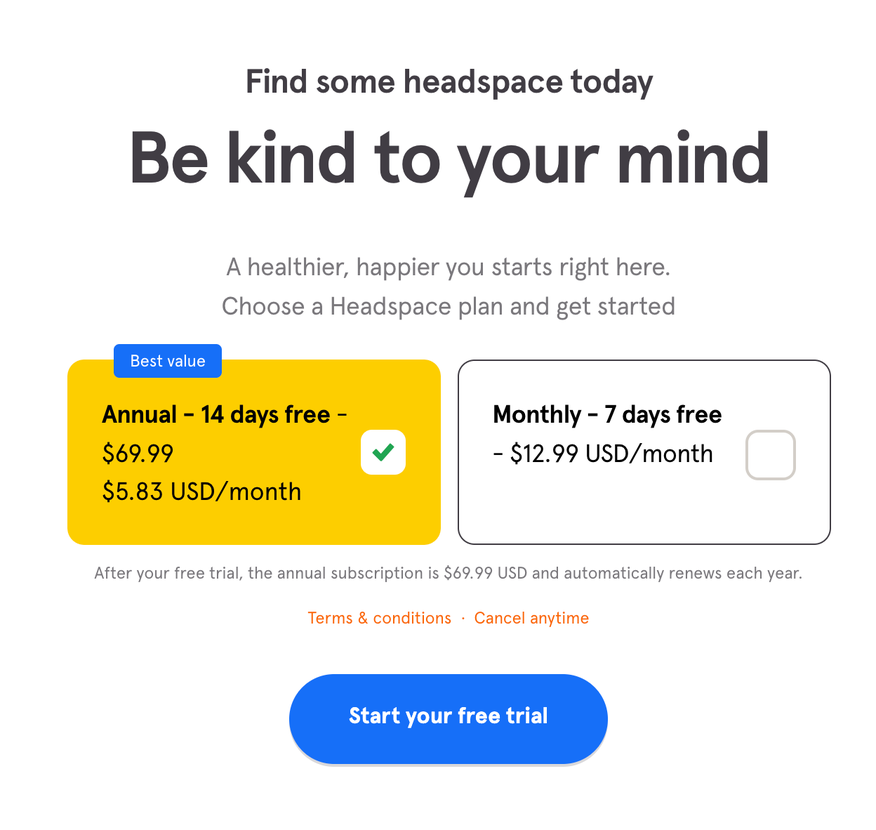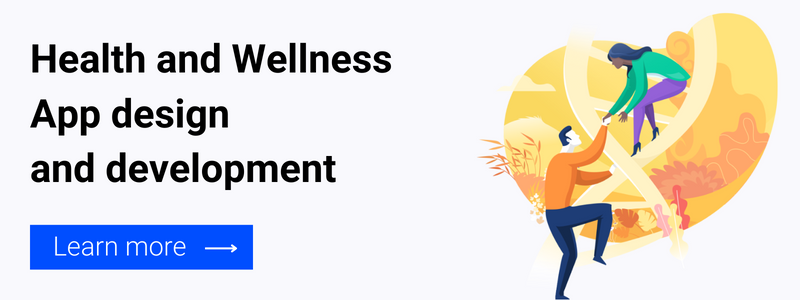
Never before have we seen such a surge in apps focused specifically on mental wellbeing, mindfulness and stress reduction. And although there are thousands of mental health apps emerging every day, only a handful of them attract more than a few thousand downloads.
Given the sensitive nature of the matters they address, building one is no cakewalk. So it’s natural that if you’re going to try, one of your first questions is how is this app going to make a profit while helping people live better? Monetizing health and wellbeing apps is similar to other regular models of app monetization, with a few specifics to keep in mind. Here’s the most common monetization methods and their peculiarities for health & wellness apps.
Monetization strategies for health and wellbeing apps
Now that we’ve covered the basics of entrepreneurship 101, let’s cover some of the most common monetization models for wellbeing apps.

1. Pay-per-download
Charging for app downloads were the most common monetization strategies when apps were first introduced in the mobile world. This model is less popular these days, as most apps use a subscription or a freemium approach. The reason is simple: it is much harder to convince users to pay for your app, if they haven’t had a chance to use it. What is more, you should be careful when calculating a viable price per download, taking into consideration the cost of future updates and support that the app might need.
2. Freemium
Spotify, Trello and Happify are just a few examples of companies that use this monetization model for their business. The freemium approach works very well in attracting users and allowing them to experience the app for free, and offer an enhanced experience in exchange for payment (either one-time or subscription-based).
The freemium model is especially useful in winning over a large user base and gaining awareness for newly emerging products. However, one of the biggest flaws of the freemium model is that a company can burn its cash reserve fast for supporting a large number of non-paying customers. In this case, app owners should carefully consider the time, resources and money needed to convert free users to paid ones and see how they can break even.
For this reason, many companies, such as Headspace use a free trial version, where users can try the full functionalities of the product for a limited time, after which a payment is necessary.

3. In-app purchases
This is one of the most successful app monetization strategies as it makes up 47% of the total revenue generated from medical apps. In-app purchases can take various forms, based on the nature of the app: in fitness apps, they are extra workouts, in medical applications - purchasing supplements, pre-paying for doctor’s visits or having prescriptions refilled.
However, we wouldn’t recommend in-app purchases as the main monetization strategy, because that would mean too many main features should be locked for use. Additionally, in-app purchases have been considered as manipulative from authors like Nir Eyal, which can be problematic for products that aim to help people build mental strength. Instead, use in-app purchases as an upselling strategy for additional services, so that the application is still fully functional without the extra costs.
4. Percentage-based fee
Although it is not the most popular method for mobile apps, percentage-based (or commission-based) fees are also a good practice for health & wellbeing apps. Users pay a small fee for a certain action that they make, which means they are only paying for the services they use.
Our long-term client is one example of a health company that implements the percentage-based model. Altrix is a technology-led nurse staffing agency that enables nurses to book nurse shifts safely and securely from the Altrix app. For each booked shift, Altrix keeps a commission fee from the hospitals that employ the nurse, which is previously negotiated and calulated with the hospitals and NHS trust funds.

The difficulty with this method is having a very clear view of the overall money flow, in order to understand how to properly price your service. Additionally, for this strategy to work, the company should consider what strategies could be implemented to encourage user loyalty and retention. For Altrix, for example, we did a mini UX audit and included key UX/UI features to build user loyalty and increase the number of bookings on the app.
5. Selling ad space & sponsorships
Selling ad space or collaborating with sponsors can be a really lucrative way to make profit out of an app, however not the recommended one for health & wellbeing apps. Firstly, ads can frustrate users and disrupt the main user experience, which might ruin the goal of the app in the first place. Selling ad space would also mean the app collects and stores the data of its users, which are then provided to third parties (the ad buyers).
Needless to say, mental health and wellbeing information is considered sensitive data for many users (even if privacy and data regulations might permit it), and there have been numerous scandals of wellbeing apps selling users' data, like as Flo and Talkspace that repelled users from using their services.
6. Paying for privacy and Patronage
Other less popular monetization strategies include charging for users for their privacy - they pay a higher price because they don’t want to allow their activity being tracked. In 2015, AT&T offered broadband service with a $30-a-month discount for users who agreed to have their internet activity tracked. Needless to say, paying for privacy is also not the most favorable monetizing strategy because of at least two reasons: 1) it is not really sustainable and you would still need to think about the value you bring to the table to convince users to pay; 2) it automatically means you are tracking and selling the data of all the other users, which, as we discussed, is a no-go.
Some other platforms choose a user-supported method by those that strongly align with the founder and want to support them in realising this idea. Platforms like Kickstarter, Fundly and Indiegogo can be very ueful allies when using this method. Again, this method can deem suitable for fresh entrepreneurs looking for external support but once the initial funding is collected, but after that you would still need to devise a more solid monetizing strategy.
Have your monetization strategy in place
Deciding which monetization strategy works for your business means analysing the type of application you are creating and the features you will include in it. But one thing is sure: having your monetization strategy in place before you begin development can help you build the proper structure and start profiting from your app earlier.
Over the last 14 years, we’ve worked with clients all around the globe to create innovative products that do just that. With a special focus on health and wellness, we design, deliver and support engaging digital solutions to challenging problems. Make sure you check out our guide on how to build ethical and functional wellbeing apps.
Check out our special design and development offerings for health and wellness apps belows.





